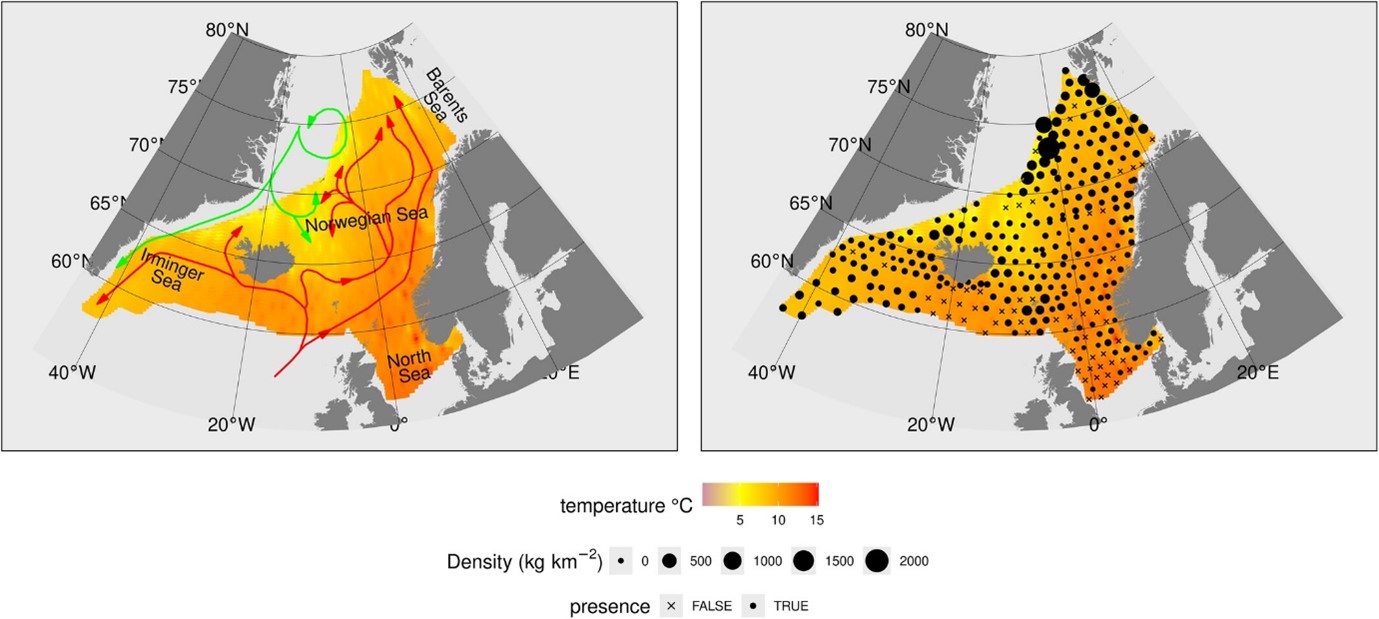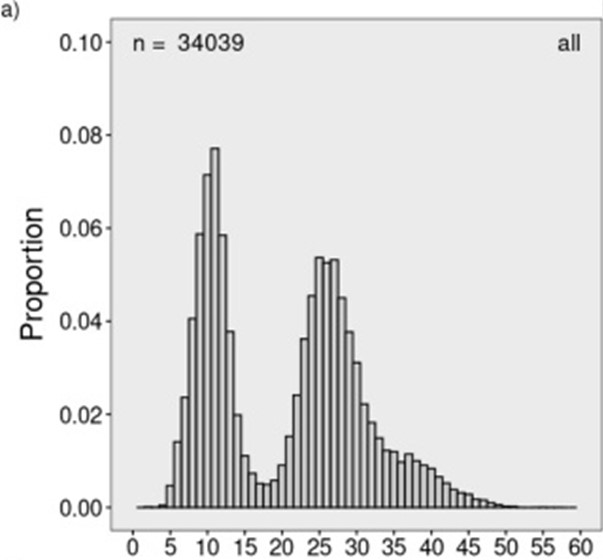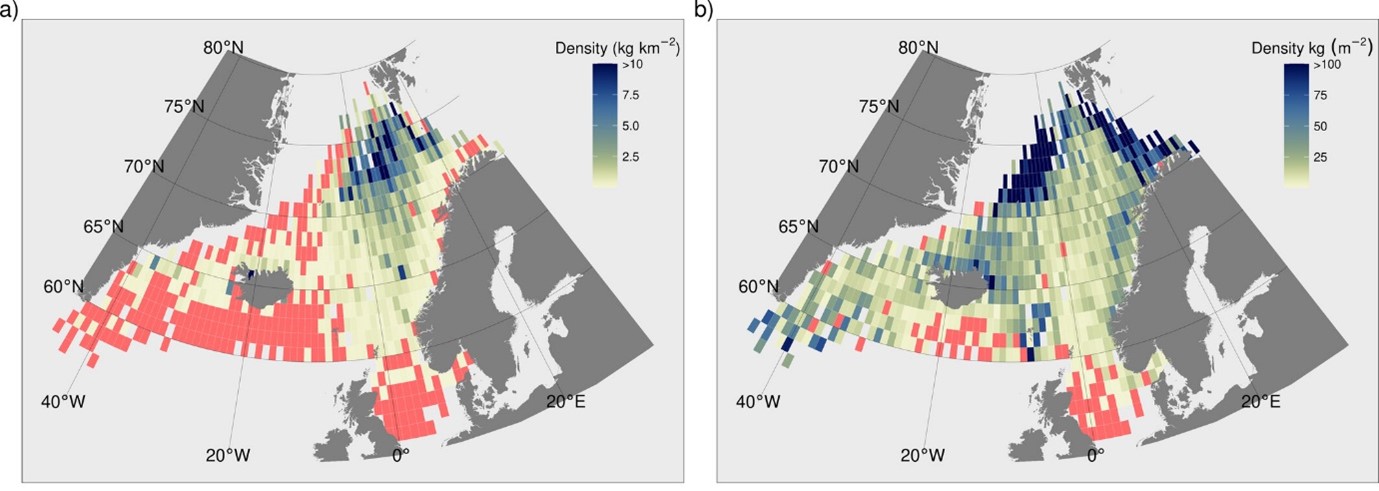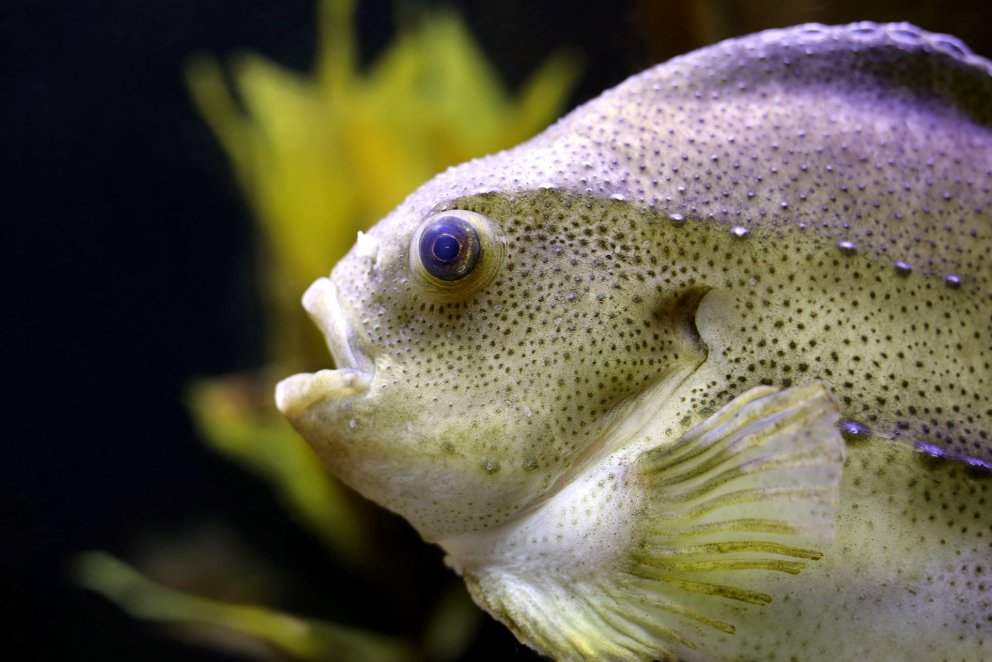- Research
- Fish tagging
- Lumpfish research
- Oceanography
- Seabed mapping
- Arnarfjörður
- Drekasvæði
- Ísafjarðardjúp
- Jökulbanki
- Jökuldjúp
- Kolbeinseyjarhryggur and adjacent area
- Kolluáll
- Langanesgrunn
- Látragrunn
- Nesdjúp
- Reykjaneshryggur and adjacent area
- Selvogsbanki
- South of Selvogsbanki
- South of Skeiðarárdjúp
- South of Skerjadjúp
- Southeast of Lónsdjúp
- Southwest of Jökuldjúp
- Suðausturmið
- Suðurdjúp
- Vesturdjúp
- East of Reykjaneshryggur
- Vestfjardarmid
- Seal research
- Whale Research
- Advice
- About
Temperature is the main driver of lumpfish distribution
03. June 2025
Lumpfish spawn around the coast of the Nordic countries with the young migrating away from the coast as they grow, but where do they go? The new publication, from researchers in Iceland, Greenland, Faroe Islands, Denmark and Norway, documents the distribution of lumpfish during summer from the International Ecosystem Summer Survey of the Nordic Seas (aka the mackerel survey). Lumpfish was found throughout the Nordic Seas, living at a low population density but with an extensive distribution, covering the Irminger Sea, Denmark Strait and Norwegian Sea (Figure 1). However, their frequency of capture is lower south of Iceland and in the North Sea in comparison with other coastal and oceanic areas.

Figure 1. Map of the Nordic Seas with the main warm (red) and cold (green) surface currents in the Northeast Atlantic (a) and location and density of lumpfish (Cyclopterus lumpus) caught during the International Ecosystem Survey of the Nordic Seas during 2020 (year of greatest coverage) (b). Temperature at 20 m in 2020 is shown.
The survey caught two size groups of lumpfish, those smaller than 18 cm and lumpfish which were larger than 18 cm (Figure 2). These two groups were termed juveniles and adults respectively, and their distribution was examined separately.

Figure 2. Length distribution of lumpfish caught during the International Ecosystem Summer Survey of the Nordic Seas between 2010 and 2023.
The distribution of juvenile and adult lumpfish differed, with adults being spread over a larger area than the juveniles. The highest concentration of Juveniles was in the central Norwegian Sea but also found throughout other areas of the Norwegian Sea, as well as areas north and west of Iceland (Figure 3). Adults were found almost throughout the entire survey area but with the highest density in the north-east and north-west of the Norwegian Sea and around the north and east of Iceland (Figure 3).

Figure 3. The average density of juvenile (< 18 cm) (a) and adult (≥ 18 cm) (b) lumpfish (Cyclopterus lumpus) by 1 × 1° rectangle during the International Ecosystem Summer Survey of the Nordic Seas from 2010–2023 for all years combined. Red indicates the area was surveyed, but no adult or juvenile lumpfish were caught.
The researchers investigated several environmental factors to see if these influence the distribution of adults and juveniles. While juveniles were most commonly found at temperatures of 6-10ºC, their distribution is most likely determined by a combination of hatching location and ocean currents, and they showed no preference for waters with higher levels of phyto- or zooplankton. In contrast, temperature was the most important factor determining distribution for adults which were most likely to be found at temperature of 4-8ºC. But they also showed no preference for areas with higher levels of phyto- or zooplankton. The occurrence of both juveniles and adults feel sharply at temperatures >12ºC which explains their absence from areas south of Iceland and much of the North Sea.

